Pamela King's Blog, page 6
December 3, 2017
Writers love it when you tell them you like what they do!
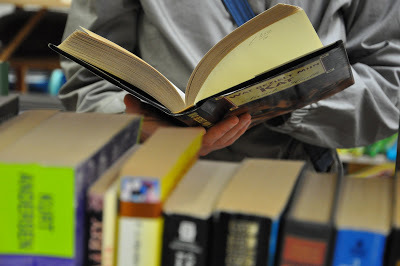
In the world of writing there are very few who make a full time living from their craft. We enjoy our craft and love to share our thoughts, dreams and imagination with others. There is nothing better to keep a writer motivated than positive feedback – even constructive criticism is greatly appreciated.
There are many ways you can show your appreciation to an author. Here are some ideas:
Don’t be shy, simply tell the author.
Send them a letter or an email. Send them a message via their Facebook page or website. Sign up for their newsletter or blog if they have one.
If you are on social media then use your favourite source to tell the world.
Tweet your appreciation.Post your appreciation on Facebook.Take a photo of the cover and stick on Instagram.Pin the book on Pinterest.Post it on Tumblr.Promote via your social media tribe.
Blog about it. If you are a blogger I am sure you appreciate positive feedback on your work. Why not do the same for the author of a book you have enjoyed by posting a review or a writing a blog about the author.
Review it. There are several websites that have a good following by readers wanting to read reviews of books they are considering purchasing. Amazon, Goodreads and LibraryThing are the main ones. Many writers also have an author’s page on Amazon and Goodreads where you can follow them and give feedback.
Tell your family and friends
Recommend the book to your friends.Suggest that your local book club reads the book.Post a link to the book on one of your ‘Read & Recommend’ Facebook Groups.
Do you write reviews on the books you have enjoyed?
Published on December 03, 2017 18:14
November 25, 2017
As Writers, Do We Need to be Perfect with our Language All the Time?
 As writers, who want to share their stories with others, I believe, we have a duty to be pedantic about our use of language; that is, correct grammar and spelling. There will always be difficult, complicated and varied opinions about some aspects but we should do our very best and continue to learn.
As writers, who want to share their stories with others, I believe, we have a duty to be pedantic about our use of language; that is, correct grammar and spelling. There will always be difficult, complicated and varied opinions about some aspects but we should do our very best and continue to learn.Having said that, I think there are areas, especially with dialogue, we need to diverge from accuracy to correctly portray characters in words to our readers.
My favourite Australian writers is CJ Dennis.1 His writing can take some getting used to but, when read as it is written, you have a clear image of the speaker and their accent. Here is one example from his poem Doreen:
'Er name's Doreen ...Well, spare me bloomin' days!You could er knocked me down wiv 'arf a brick!
Yes, me, that kids meself I know their ways,
An' 'as a name for smoogin' in our click!
I just lines up 'an tips the saucy wink.
But strike! The way she piled on dawg! Yer'd think
A bloke was givin' back-chat to the Queen....
'Er name's Doreen.
Somehow it just would be the same written in pure English.
How much should authors follow purity in spelling and grammar especially with dialogue. The writer must convey his characters with some accuracy and if that character is supposed to have say an Irish accent then that is how it needs to be written to convey it to the reader. That cannot be done using ‘proper’ English
To accurately give an indication of person’s accent, or even their lack of education, it is beneficial to the reader if the author can have that reader “hear” the spoken word. Local jargon also helps the reader imagine the character.
These might be expressions used frequently in a particular country eg in Australia people are frequently greeted with g’day (good day) or if you are happy with something someone has done you might say ‘bewdy mate!’
 Both England and Australia have sections of the community that use rhyming slang eg ‘I am going down the frog and toad’ (road).
Both England and Australia have sections of the community that use rhyming slang eg ‘I am going down the frog and toad’ (road). However, there are some phrases and words common today that I believe should NOT be used because they are simply bad grammar. The one that annoys me the most is the common use of ‘yous’ as a plural for you.
What are your thoughts on the subject?
1 Clarence Michael James Stanislaus Dennis, better known as C. J. Dennis, (7 September 1876 – 22 June 1938) was an Australian poet known for his humorous poems, especially "The Songs of a Sentimental Bloke", published in the early 20th century. Though Dennis's work is less well known today, his 1916 publication of The Sentimental Bloke sold 65,000 copies in its first year, and by 1917 he was the most prosperous poet in Australian history. Together with Banjo Paterson and Henry Lawson, both of whom he collaborated with, he is often considered among Australia's three most famous poets.
Published on November 25, 2017 15:40
November 18, 2017
Realise and Appreciate the Value of Time
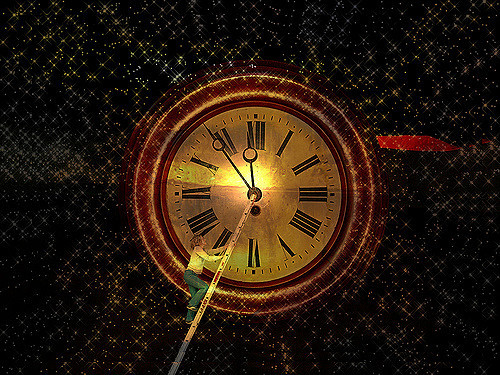
To realise the value of ONE YEAR ask a student who failed a grade.To realise the value of ONE MONTH, ask a Mother who gave birth to a premature baby.To realise the value of ONE WEEK, ask the editor of a weekly newspaper.To realise the value of ONE HOUR, ask the lovers who are waiting to meet.To realise the value of ONE MINUTE, ask the person who just missed the train.To realise the value of ONE SECOND, ask the person who just avoided an accidentTo realise the value of ONE MILLISECOND, ask the person who won the Olympic Silver Medal.
Treasure every moment that you have! And treasure it more, because you shared it with someone special.Special enough to spend your time with. And remember that time waits for no one.
Yesterday is history.
Tomorrow is a mystery.
Today is a gift. That's why it is called the present.
Published on November 18, 2017 11:35
November 11, 2017
Unplanned Adventure by Pamela king
 Central Station, Sydney c 1960s
Central Station, Sydney c 1960sIt was early morning as I stood with my parents at Central Station excitedly waiting for the train to Griffith.
It’s strange, I thought, I wonder why Mum and Dad are allowing me to do this trip on my own?
Although their decision had surprised me, I was proud they trusted me. I felt no nervousness and was excited but I did wonder what I would do for about 10 hours on the train, even with my book to read.
For about the fifth time Mum reminded me. “Now don’t forget, you don’t need to change trains, and Mr and Mrs Sutcliffe will meet you at Griffith station”.
“It will be quite an experience for you living on a sheep property in the middle of nowhere but you will have a great time with the three Sutcliffe children”, added Dad.
“I won’t forget Mum, stay on the train until Griffith.” “Yes, Dad, I am looking forward to seeing them again.”
As the train sounded its whistle we exchanged quick hugs and kisses all round, “Quickly, you better get on board!”
I settled in my seat and waved goodbye as the train pulled out. Now a little nervousness was creeping in. “Oh well, I can’t do anything about it now.” I thought to myself.
“Hello,” said the young woman sitting next to me. “My name is Carol. What’s yours?”
“Pam”. I replied shyly. “And what school do you go to?”
“I have just left primary school and start at Sydney Girls’ High this year.”
“Well that’s quite a coincidence! I have just completed my Leaving Certificate at Sydney Girls’ High.” We laughed and I asked a lot of questions about the school. Carol was also travelling to Griffith.
James and David, two brothers, a little older than Carol, were sitting opposite and overheard the us mention our destination. “We are going to Griffith too”, said James. They were very well dressed and polite. I was feeling comfortable now and sure the trip would not be boring. It wasn’t.
The train pulled into Narrandera. A conductor walked through. “All change!” We were very confused believing our journey was nonstop. We asked where the train to Griffith departed. “Platform 2, but hurry up it is about to leave.”
Struggling with our luggage we just made it up the stairs and down again in time to board.
With the luggage stowed we settled back into conversation. Only James didn’t participate. He was staring out the window with a frown on his face. “What’s up?” asked Carol.
“This train is going back to Sydney!” he exclaimed.
“No, it can’t be.” Said David.
“I don’t care,” retorted James. We need to get off at the next station.” After checking the passing scenery, everyone agreed it was the only thing to do.
At the next station we gathered our luggage, piled off the train and looked around for some sign of life. All we found was a small waiting room and a station sign that read: Grong Grong. Not a soul in sight.
It was getting on for 6pm so, leaving our luggage in the shelter, we walked across the road to the one and only building with any light – the pub. At least we can get something to eat and hopefully phone the people meeting us in Griffith.
Everyone was very friendly and helpful. Just our luck it was the cook’s day off but the publican’s wife made us some sandwiches. Just as we were tucking into the these the publican came in with another man. The stationmaster!
Our new acquaintance told us there were no trains due until the morning but he would certainly ring through to Griffith for us. We traipsed back to the station wondering if we would need to get a room for the night at the hotel.
A few minutes later the stationmaster came running up carrying a lamp. He said we are in luck and we would get to Griffith about 10pm. We looked at each other. How if there were no trains?
“Hurry up, get your luggage together.” He said.
We heard a train approaching. He walked to the edge of the platform and started waving his lamp. The train pulled to a stop. It was a goods train. How is that going to help us?
“Come on.” he said. “Pick up your bags.”
Doing as we were told we grabbed our bags and followed him to the end of the long line of wagons. At the end was a small compartment that seated six people.
“In you go.” He smiled. “I’ve phoned Griffith Station and they have found the people waiting for you. You’ll be just fine now.”
It had been a long day and with the rocking of the train I soon dozed off. The next thing I hear is “Come on sleepy head. Wake up!” Mr Sutcliffe was standing there with a huge grin.
He had driven on to Narrandera and met the train there. We piled in his car and he dropped my travel companions at the properties where they were staying then headed home.
Published on November 11, 2017 21:03
November 4, 2017
Important Advice for Dogs – Putting Things in Perspective
 If you are a dog and your human is misbehaving here is some important advice for you.
If you are a dog and your human is misbehaving here is some important advice for you.You should have your human fixed, even if it's a purebred human. There are too many humans, and our big cities are over populated with them to the point where we are unable to feed and shelter all of them.If your human talks too much, we suggest using a shock collar.If you must breed your human, even though we do not believe there are any good reasons for breeding humans, at least do genetic screening to help insure your human is a healthy one that conforms to breed standards.
Some humans are very hyper and will pull on their leash constantly. For these extreme cases, we recommend a choker collar.If your human is aggressive and frequently starts fights, please put a muzzle on it when you take it out in public. You should feed your human something better than Purina human chow.If your human is sick, you should not put it down just because you can't afford the cost of surgery. You should re-arrange your budget or mortgage your dog house.Don't buy a human for your puppy just to teach it responsibility.You should always carry "money" treats to reward your human. Humans love money and will do almost anything for money treats.If your human attacks a dog, it should be put to sleep.If you already own a male & a female human, you should be careful about getting a third human. Two males will often fight very aggressively for the attention of the female, and two females will often do the same over a male human.A good way to test a human for temperament is to take its money or food away from it to see if it reacts aggressively.Some humans have a bad habit of peeing in the water bowl; if your human continuously goes to the bathroom in the house, we suggest you chain it outside.
Published on November 04, 2017 11:20
October 28, 2017
The Importance of Research for Writers Part 1
 Most people would agree that research is essential for non-fiction work. It is obvious you must have your facts straight. How much research is necessary? Is it enough just to check facts? Is it necessary for fictional work?
Most people would agree that research is essential for non-fiction work. It is obvious you must have your facts straight. How much research is necessary? Is it enough just to check facts? Is it necessary for fictional work?This is the first in a series about research for both fiction and non-fiction writers.
Any non-fiction, particularly biographical stories must hold the readers interest.
That means building your background images as much as presenting facts and developing the personalities of the characters.
In the biography I am currently writing the lady who is the subject of the book grew up during the Great Depression and World War II. I felt it was important, for readers to understand what that was like in Australia so, I have included some additional detail of that time. That meant doing my research.
In the case of fiction, you need to give your readers clear images of time and place. Whether your story involves a particular place or time period then you need research so you paint clear and accurate word pictures
What research should you do?
Here are some points that might apply to your story.
Facts – Nothing stands out more than when an author gets their facts wrong. It takes away all credibility.Background word images – With the plethora of photos and travel sites on the internet there is no need to visit a destination to get an idea of how it looks and feels. Travel websites are valuable in helping develop a ‘feel’ for your setting.Destination history and industry - If your location has a specific historic feature or relies on a particular industry you should also be familiar with the related facts.Writing sci-fi and don’t think you need to do research because it is all in your imagination? Think again many sci-fi readers are also science geeks so you better bone up on current scientific advancements, research and innovation.
Published on October 28, 2017 12:14
October 21, 2017
Dingo Ambassador
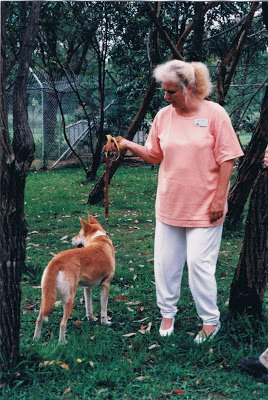
Last week I posted about the launch of the Seniors Stories Volume 3. Here is my "Dingo Ambassador" story included in that publication.
***I met Berenice Walters, founder of the Dingo Sanctuary, Bargo and known as the Dingo Lady about 1988 when I was Tourism Manager for Macarthur. Her passion for Dingoes was infectious and I became an enthusiastic supporter; Dingo handler, sponsor and Board member.
I spent a lot of my spare time at the sanctuary and with Berenice as my teacher and mentor became confident talking about Dingoes and introducing my favourites to visitors. My job involved very long hours and a lot of stress. When things got too stressful my favourite things was to visit the sanctuary just before closing.
After saying hello to all the Dingoes, spending extra time with each of my favourites, Berenice and I would enjoy a glass of wine in the sanctuary as the sun set. The Dingoes often broke into song, if they didn’t Berenice was always able to get them started. I am blessed to have been able to experience this on many occasions and always went home revitalised.
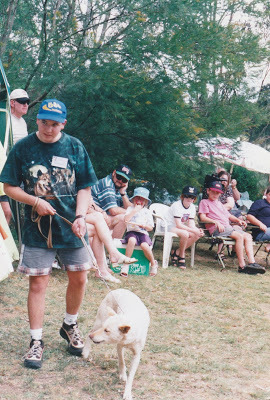 My son, Clinton was also a welcome visitor. His favourite Dingoes were Wattle and Oola. One time Dr Harry Cooper visited and Berenice asked if Clinton could come. Clinton not only featured in the episode of Talk to the Animals, along with Wattle, but was included in the opening of each show.
My son, Clinton was also a welcome visitor. His favourite Dingoes were Wattle and Oola. One time Dr Harry Cooper visited and Berenice asked if Clinton could come. Clinton not only featured in the episode of Talk to the Animals, along with Wattle, but was included in the opening of each show.The dingoes were mostly on their best behaviour on the day except for Wattle who knocked Dr Harry’s glasses off in her exuberance and Humpty-Two who chewed the expensive cover of the outdoor microphone when no one was watching.
Clinton and I also participated in the annual DingoFest which included a parade of dingoes. Clinton would parade his precious Oola and I would provide the commentary.
I was honoured to be trusted by Berenice to take a Dingo out for socialisation or promotional activities. When we organised a fair at the Liverpool Visitor Information Centre the sanctuary’s volunteers brought along several dingoes and we put on a mini Dingo Parade.
One of my roles as tourism manager was co-ordination and promotion of the AussieHost customer service training program. The sanctuary had a littler of pups due and I spoke to Berenice about my idea of sponsoring a pup as the mascot for AussieHost to attend certificate presentations and other events.
My reasoning was twofold; using a Dingo would draw attention to the program as well as to the sanctuary and its work.
We had been successful in taking Dingoes to a variety of tourism events including the annual Tourism Expo at Darling Harbour. Their presence always drew attention to our displays.
The Dingo I sponsored was named ‘Hostie’. My beautiful girl was socialised early; attending her first promotional photo shoot at six weeks old.
The irony of this event was that it was held in a Camden Council building previously used by the Moss Vale Pastures Protection Board; the organisation that had been responsible for the Dingo ‘control’ activities in the district.
From the age of 8 weeks she attended AussieHost certificate presentations and tourism promotional events. She was a hit with everyone she met and very relaxed under any situation although car travel wasn’t her favourite thing.
One of the certificate presentations was to be held at the Campbelltown Catholic Club. I rang the club prior to the function and asked if I could bring a Dingo. A moment of silence came from the other end of the line, then a little giggle and “I thought you said a Dingo”.
“Um, yes, that’s what I said.”
“Oh! I don’t know I’ll have to check with the manager.” The manager came on the line and I explained that THIS dingo was the mascot for the function, extremely well behaved and socialised.
All went well until the food was served. Everyone was lined up waiting to help themselves from the buffet when Hostie decided she was the most important one there and tried to jump on the food table. I think in the end she got more to eat than anyone else because they wanted to feed her titbits.Once, she even attended a Nationalisation ceremony for Wollondilly Shire Council and got more attention than the Mayor.
The Dingo Sanctuary rarely bred stock but did breed for other sanctuaries and zoos.
One litter was selected by Western Plains Zoo, Dubbo for the new Dingo enclosure. I had spent a lot of time with these pups and had the pleasure of being at the sanctuary when their handlers came to collect them.
Sometime later, while attending a conference in Dubbo, I contacted the handlers to see if I could visit the now adult Dingoes.
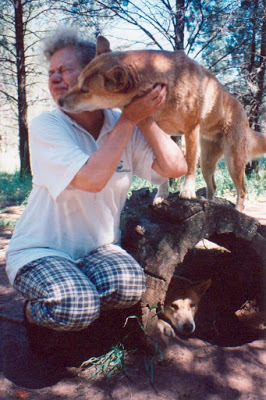 I was made very welcome by the staff and taken behind the enclosures to be let in through a back gate. To my complete delight they remembered me and jumped all over me. It was a moment I will never forget.
I was made very welcome by the staff and taken behind the enclosures to be let in through a back gate. To my complete delight they remembered me and jumped all over me. It was a moment I will never forget. As I write about this special time in my life I am working on Berenice’s biography. I had been out of touch with Berenice and her daughter Christine for some years and hadn’t heard about Berenice’s passing following a long illness. Christine was concerned about the future of her mother’s records. I jumped at the opportunity to help out and agreed to sort through all her manuscripts, photos and videos. This is involved digitising everything so that her years of research and work will be available to future generations of researchers and students.
I have published one a book about Berenice and three of her dingoes titled “For the Love of a Dingo”.
My time with the dingoes taught me a lot about Australia’s native dog and I was very lucky to have experienced a very personal relationship with many of them and to have received their love in return.
But, mostly it was a great honour and a privilege to be involved with an inspirational lady who had dedicated her life to educating people about our wonderful Dingo.
Published on October 21, 2017 12:48
October 14, 2017
Feeling Proud
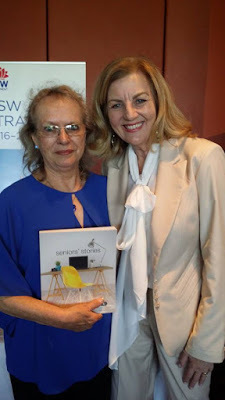 With Jean Kittson
With Jean KittsonLast Thursday I attended the launch of Seniors Stories Volume 3. It is a compilation of stories written by older people from all over NSW. Over 500 stories were submitted with 100 chosen as outstanding examples of literary talent and creativity.
Why am I so proud? Because my story “Dingo Advocate” was selected to be included!
Fine weather, a very friendly crowd in attendance and caring hosts made for a lovey day. The book was launched at NSW Parliament House by the Minister for the Aging, The Hon Tanya Davies MP. Jean Kittson was a highly entertaining MC and genuinely interested in the writers whose stories we included in the book.
A big thank you to Narelle Noppert, President of my local branch of the Fellowship of Australian Writers for accompanying me and making the day so special.
On the train trip into Sydney we talked non-stop about writing. The journey home was very different. Hardly a word was spoken. We were both head our heads buried in the book.
Published on October 14, 2017 22:01
October 7, 2017
The Photographer by Pamela King
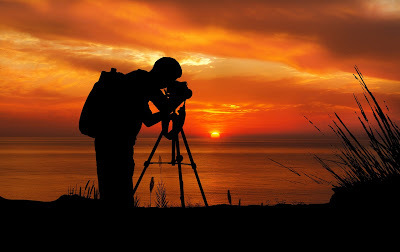 Most of us have at least one or two and all of us have seen them – those big coffee table books with amazing photography. What are they really? Just nice books for your guests to flip through while you brew them a cuppa?
Most of us have at least one or two and all of us have seen them – those big coffee table books with amazing photography. What are they really? Just nice books for your guests to flip through while you brew them a cuppa?Certainly, some will evoke personal emotions of places travelled, animals we are passionate about or pride in our own country. But look deeper into the images and you can often find a lot more.
Most photographers of this calibre have a purpose. A purpose more than presenting just incredible impressions on a page. They bring us the reality of our world.
Nature at her most beautiful radiates from pages but the same artists can also show us her savage and cruel side.
When the photographer takes to the air, be it with an aircraft or a drone, he brings us aspects of our planet and life that are rarely captured.
Of course, the animal kingdom is popular from the majestic and fearsome to the minuscule and seemingly unimportant. And yet none are unimportant; all have their role in keeping the environment in balance and check.
Photos of structures, old and new, show us where we’ve been and give us an insight into where we are going. Is it better or am I being nostalgic?
The joy and wonder of life to despair, pain and lasting peace of death show us how our people of differing cultures cope with reality.
There are lessons in this high-quality professional art form. Lessons telling us to revere nature, to be conscious and respectful of all cultures, to care for all creatures.
So, next time you sit with a book or magazine of high definition photography, take the time to read into what the photographer is telling us. Look into the eyes of the people. What is their story? Absorb the images of nature. Are we doing enough to protect our planet? The photographer is showing us what we need to know. Are you understanding his message?
Pamela King © 2017
Published on October 07, 2017 22:23
September 30, 2017
Ten Famous Authors Whose Work Was Initially Rejected
 Beatix Potter
Beatix PotterAs a self published author, writer, reviewer and blogger I am always interested in how other authors became successful. It is heartening to know that many well known authors were rejected by potential publishers. I bet those publishers ended up regretting their decision. Here are some of those writers.
This article was written by Caitlin Jans on 22 June, 2017 for the Authors Publish website http://www.authorspublish.com
Ten Famous Authors Whose Work Was Initially RejectedOne of the ways I comfort myself when I face yet another rejection letter is to think about the “loads” of rejection letters J.K. Rowling received while she was attempting to publish Harry Potter.
I also think of the five years Agatha Christie spent trying to get her first novel published. I have not spent five years trying to get my novel published yet. I am not even close.
I assume most famous and established authors struggled with rejection before finding success, although most don’t talk about the rejections they received before the acceptance. A lot of motivation can be found in knowing how many rejection letters some author’s and books received before being published. I hope this article will encourage you to persist.
Below without any further fuss are 10 authors that dealt with a great deal of rejection, before their work was accepted.
Audrey Niffenegger submitted her book The Time Traveler’s Wife to 25 agents. Every one of them turned it down. Then she submitted it directly to a small publisher who loved the book. It went on to sell over 7 million copies.
Theodor Seuss Geisel, better known as Dr. Seuss, had his first book, On Mulberry Street, rejected 27 times before it was accepted.
Kathryn Stocketts book The Help was rejected by 60 literary agents. Thank goodness for agent number 61!
Sylvia Plath was already a known poet by the time she tried to publish The Bell Jar, under a pseudonym. It was rejected even once the publisher found out who the author really was. You can actually read the rejection letter here – just scroll down past the first letter.
Madeleine L’Engle’s A Wrinkle in Time was rejected by 29 publishers. My childhood would have been completely different without that book.
Beatrix Potter was rejected so many times she initially self published the Tale of Peter Rabbit. Then it was picked up by the publisher Frederick Warne & Co. for a trad edition.
Robert Maynard Pirsig is in the Guinness Book of records for having written the best selling book that received the most rejections, Zen and the Art of Motorcycle Maintenance which was rejected 121 times.
Stephen King had already published a number of shorter works when he wrote and attempted to publish his first novel Carrie. Carrie was rejected by 30 publishers before it was accepted.
Meg Cabot, the author of The Princess Dairies and many other bestselling books, was rejected for two years by publishers and agents before she found an agent. It is important to note that unlike a lot of other authors on this list she was submitting more than one manuscript to different publishers, so it wasn’t one book receiving all the rejections, but several. She still keeps a giant postal bag full (that she say’s she can barely lift) full of the letters. She writes about her experience here.
L.M. Montgomery’s book Anne of Green Gables was turned down by several publishers, so she stored the manuscript away in a hat box for two years. Then she decided to submit it to once more place. It is a good thing they accepted.
Published on September 30, 2017 14:14



